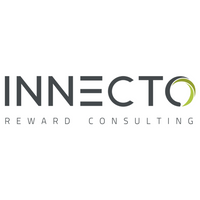Engaging a multi-generational workforce using benefits

With an age gap of more than seventy years between your youngest and oldest employees, it seems like an impossible task to suit vastly different personal priorities and financial situations. But the secret to pleasing everybody is simple - listen to them.
Conventional wisdom says that baby boomers only care about healthcare and pensions, while young people want time off to go travelling. It's true that employees' priorities change depending on where they are in their financial lifecycle - but don't just assume what they want.
Smart companies canvass opinion and use analytics to decide on what's meaningful. Tailoring your benefits offer to fit your workforce's needs will make employees feel valued as individuals, boosting engagement within the wider company. By doing so, you also minimise the added risk of cost which is usually associated with benefits.
It's also important not to feel hamstrung by conventional ideas about what a good benefits package looks like. Yes, financial provisions are important, but don't be afraid to think outside the box when it comes to small ways to improve your employees' quality of life.
Being seen to care
For example, Timpsons makes an event out of employees' birthdays, offering them a day off, a card, and a bottle of champagne to mark their milestone dates. These perks cost hardly anything to the organisation, but communicates a message that employees are appreciated outside the work environment. Young or old, everyone wants to feel that their employer respects them.
Non-monetary benefits help to create a standout proposition against competitors, and valued employees stay longer. Timpsons' turnover rate is only 22% - many employees have been with the company throughout their entire working life, and encourage family and friends to work there too.
How to find out what your employees want
It can be as simple as an internal survey or conducting focus groups, provided the information you gather is detailed enough. Let employees tell you about their priorities and how you can deliver benefits which will be meaningful and impactful to them.
For example, a younger workforce may value schemes which help get them on the property ladder, rather than pensions - just as employees with young families may prefer flexible working over additional holiday. With the use of analytics, organisations can tailor their benefits proposition to their employee demographic and the economic status of the workforce to ensure that the benefits implemented will have high take-up rates. Listening to employees can also help develop retention strategies as staff feel involved in the process.
Try to avoid over-generalisations about what each generation is interested in. Older people are just as likely to appreciate paid leave to travel the world as anyone else, especially given increased life expectancy and higher levels of disposable income.
Offering a benefit without prior consultation is a sure-fire way to ensure a low take-up rate, which costs you money. It also risks disengaging your workforce, who are left feeling patronised or ignored. If you're concerned about navigating the multi-generational minefield, just remember to listen to your employees. It may not be possible to achieve a perfect fit, but you should be willing to work towards a benefits solution which suits all of them.
This article was provided by Innecto Reward Consulting.
In partnership with Innecto Reward Consulting
We have more than 20 years' experience in getting employers' pay and reward working harder for them.







